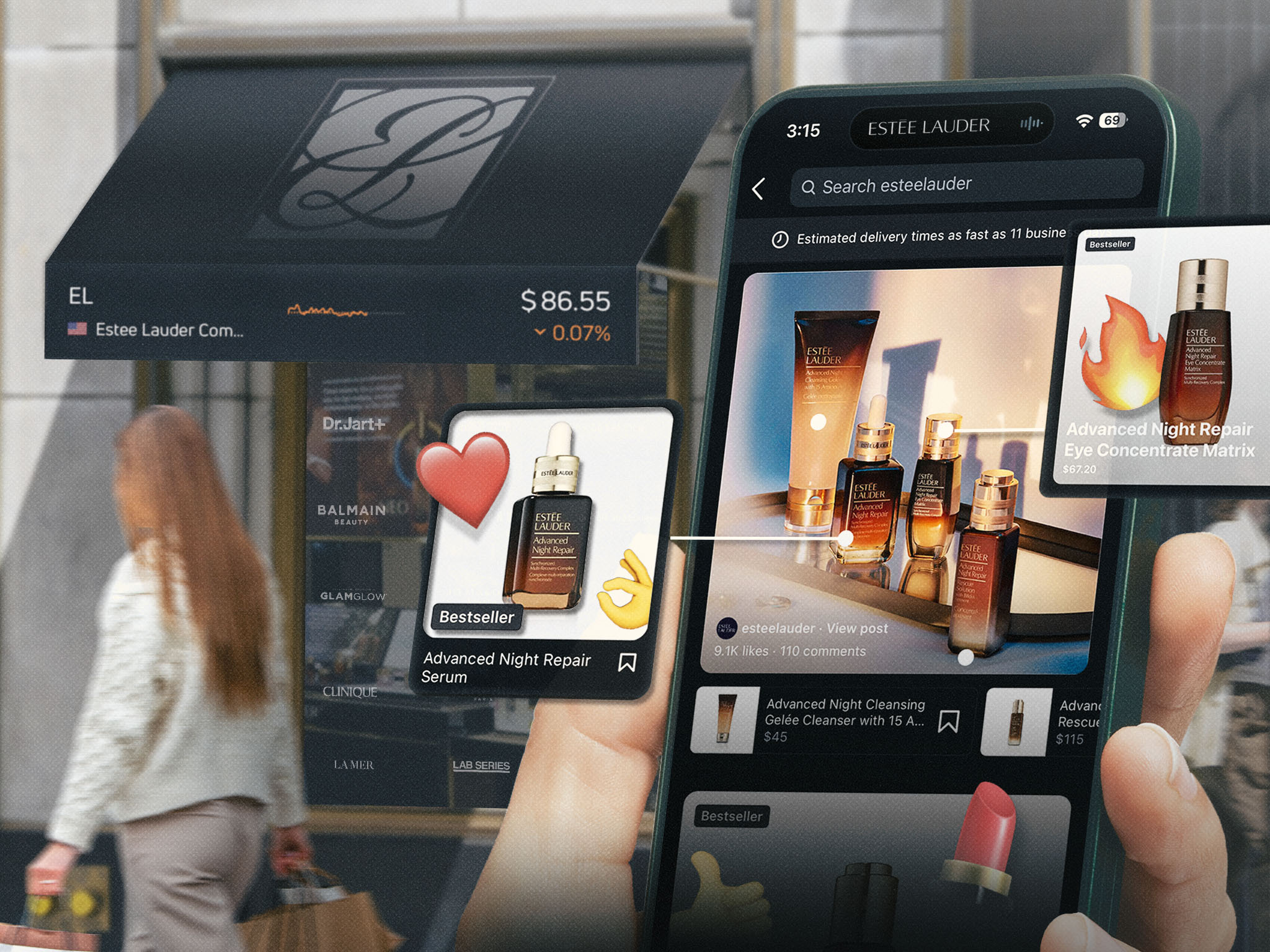Estée Lauder (NYSE: EL) is attempting to stage a comeback with its loyal shoppers by grabbing their attention with online content that turns it into a quick online purchase from their smartphones.
The cosmetics, perfume and haircare company owns 20 brands that have promised to enhance an individual’s beauty, restore their youth and produce a feeling of luxury by wearing their fragrances and wearing their hair care and skin care products.
With brands such as Too Faced that cater to Millennials and Gen Yers to its plant-based hair and skin care brand, Aveda, Estée Lauder has faced lower revenue over the past two years.
The company’s board also noticed the beauty company’s slumping sales and promoted Stéphane de La Faverie to oversee the giant. He had experienced Estée Lauder’s ups and downs since his tenure began in 2011 and had served as executive group president, overseeing many of Estee Lauder’s brands and had previously spent nearly a decade at French cosmetics rival L’Oréal.
Since de La Faverie began his role as CEO in January, he has made several changes to restore the 79-year old company’s confidence with investors and restore some of its previous luster. In July de La Faverie hired former Nestlé executive Aude Gandon, the company’s first digital and marketing officer, to compete in an industry that is inundated not only with influencers, but also with companies and new products launching frequently.
The beauty giant’s goals are to prioritize a “merger of the digital and the physical world,” de La Faverie told The Wall Street Journal and determine how artificial intelligence will shape what consumers view and buy online.
“The reality is consumers may discover a brand or product on social media or in a store,” he told The Journal. “There’s so many entry points. How do you make sure that you retain them through the journey?”
He plans to use AI to help customers find more products to either complement their existing supply of eye liners or lip colors or new ones to introduce to the mix. Data from AI will spot beauty trends faster, helping the company launch new products quicker.
As some consumers easily spend several hours a day scrolling through social media, viewing videos shared by their friends or influencers, companies like Estée Lauder are seeking to attract their attention and regain market share.
The days of shoppers waiting to buy and test out lip gloss and eye shadow colors in the store are less common, as the buzz of social media encourages them to make purchases sooner as they fear missing out on new trends.
Consumers have shifted their shopping habits in the past several years, and a greater number are willing to take the gamble, as buying their favorite products is as easy as tapping a few links and buttons on their smartphones. Retailers also introduced the option for shoppers to replenish their items every few months or as often as they would like with the push of a button.
Estée Lauder got a taste of the power of social media when Clinique’s iconic Black Honey lipstick went viral in 2021 after videos were posted about it on TikTok. Sales skyrocketed and the popularity of the lipstick rose as female shoppers of various ethnicities deemed the ubiquitous lip color to look flattering on them.
The hype resulted in the product being sold out for several months, while its hashtag, #BlackHoney, still remains widely popular. Clinique said the product is the number one lip color in the U.S. and seven Black Honey lipsticks are sold every minute globally.
Some of Estée Lauder’s brands are very active on social media with Clinique posting content, video and photos on five platforms — Facebook, Instagram, TikTok, Pinterest and YouTube.
While the company sold a greater amount of cosmetics in the U.S. during the third fiscal quarter that ended March 31 due to the success of Clinique and hair care products company Bumble & bumble and skincare brand The Ordinary, North American revenue fell as shoppers started to lose confidence in the economy and are concerned about the security of their jobs. Estée Lauder also sold fewer products to customers in China who reigned in their spending. Overall sales dropped by 10% compared to a year ago.
One potential misstep is that the company also did not immediately jump to selling their products online at Amazon until 2024. The company has seen revenue decline year over year in each quarter for nearly two years.
But Oppenheimer analyst Rupesh Parikh remains confident on the outlook of the company as sales in China are rebounding even though growth is in the single digits.
The stock rose by 15.8% during the past month, but has slumped 14% over the last year and 56% over the past five years.
Estée Lauder’s makeover can’t be a long one, and its new digital efforts must be able to reach and retain the interest of shoppers online in order to ramp up sales quickly.
The cosmetics behemoth is well-known not only for its iconic products, but also for creating the infamous lipstick index. Leonard Lauder, who served as CEO from 1982 to 1999, created the index in 2001 when the U.S. was undergoing a recession to see if customers made more purchases of cheaper luxurious items such as lipsticks compared to more expensive ones when the economy turned sour.
His creation of the lipstick index led former Mac Cosmetics President John Demsey to endow him with the nickname “original influencer.”
Estée Lauder’s new digital strategy could revitalize the company, as its online presence could influence customers to buy more of its products again.




Comments